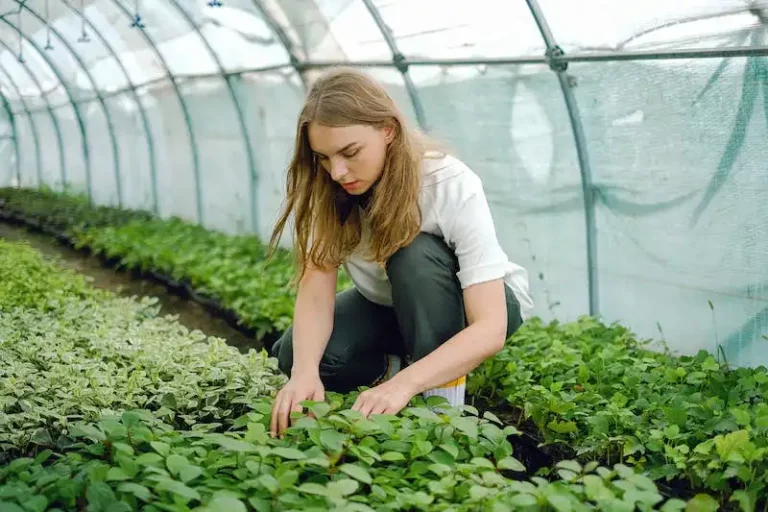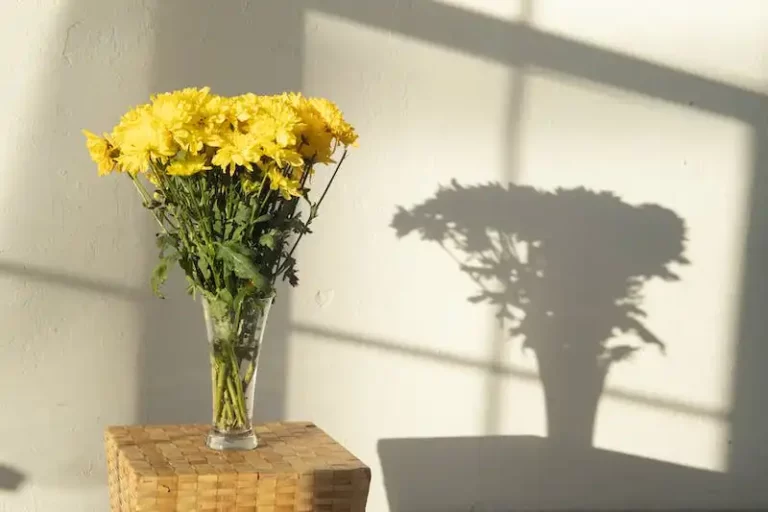Poinsettias are a popular choice for decorating during the holidays, especially Christmas. They are known for their unique and vibrant colored bracts, which resemble flowers. Poinsettias are available in a variety of colors, including red, white, pink, purple, and even speckled or marbled varieties like the popular “Picasso” or “Cinnamon” poinsettias. These plants are native to Central America and are often associated with the Christmas season.
When choosing a poinsettia, look for one with sturdy, rounded foliage and bracts that are fully colored. Avoid plants with wilted or yellowed foliage, as this could indicate that the plant has been poorly cared for. It’s also important to select a poinsettia from a reputable source, as some stores may sell poinsettias that have been held in plastic sleeves for too long. Poinsettias are sensitive to frost, so make sure to protect them during transportation and avoid exposing them to cold temperatures for extended periods of time.
Poinsettias require bright, indirect light for about 6 to 8 hours a day. Avoid placing them near drafty windows or in direct sunlight, as this can cause the bracts to fade or burn. When it comes to watering, poinsettias should be watered when the top inch of soil feels dry to the touch. Be careful not to overwater, as this can lead to root rot. If you’re unsure about how much to water, it’s better to underwater than to overwater.
Poinsettias are also prone to pests like whiteflies. If you notice any pests on your plant, try spraying it with a mixture of mild dish soap and water. This should help to eliminate the pests. Additionally, poinsettias may occasionally drop their leaves. If this happens, don’t panic. It’s a normal part of their growth cycle. Simply remove the fallen leaves and continue to care for the plant as usual.
If you want to keep your poinsettia for next year, you can try to get it to flower again. This process can be difficult and requires specific conditions, but it’s not impossible. After the holidays, stop fertilizing your poinsettia and gradually reduce watering. In late spring, cut the plant back to about 6 inches and repot it if necessary. Place it outside in a shaded area and water it regularly. In the fall, bring it back indoors and provide it with 12 to 14 hours of darkness each day. This will help trigger the blooming process, and with some luck, your poinsettia will produce colorful bracts once again.
Poinsettias
Poinsettias are popular plants during the Christmas holidays. Their festive red bracts (specialized leaves) make them a common sight in many homes and businesses. Many people like to place them in a central spot in their homes, such as the hallway or a living room. Poinsettias are also available in other colors like pink, white, and purple, offering a unique twist on the traditional Christmas plant.
Care pointers
If you’ve ever asked yourself how to care for poinsettias, here are some tips:
Light: Poinsettias require a lot of light, around 6 hours of indirect sunlight per day. Place them near a window, but without direct sunlight, as it can cause the leaves to wilt and become yellowed.
Watering: It’s important to water your poinsettias regularly, but not too much. The soil should be kept slightly moist, but not wet or waterlogged. Water thoroughly when the top inch of soil feels dry to the touch.
Frost: Poinsettias are native to Central America and are sensitive to cold temperatures. Make sure to keep them away from drafts and frosty air, as it can damage the plants. An average room temperature of around 65-75°F (18-24°C) is ideal.
Bringing poinsettias back to bloom
If you would like your poinsettias to rebloom the following Christmas season, there are some additional steps you can take. In late March or early April, you can start reducing the amount of water you give to the plant. By early May, cut it back to about 4 inches (10 cm) in height and place it in a cool, dark location. You should stop watering completely and keep the plant at a temperature of around 60°F (15°C).
In late fall, usually around Thanksgiving, bring the poinsettia back into a well-lit area and resume regular watering. This will encourage new growth and the formation of colorful bracts for the upcoming Christmas season.
Note: It’s important to be aware that poinsettias are known to be mildly toxic to pets and humans if ingested, so it’s best to keep them out of reach.
Now that you have some care pointers for poinsettias, you can confidently choose and care for these beautiful plants during the holiday season.
How to get Poinsettias to rebloom or produce flower bracts again
One common question many poinsettia owners have is how to get their plants to rebloom or produce colorful flower bracts again. This is especially popular during the holidays when poinsettias are a festive addition to the home.
First of all, it’s important to note that poinsettias are actually not bred to rebloom easily. Breeders often focus more on developing unique colors or rounded foliage, rather than concentrating on making the plant rebloom. However, with some care and attention, it is possible to encourage your poinsettias to rebloom.
One pointer is to make sure you choose a healthy plant from the beginning. Look for poinsettias with vibrant-colored bracts that are held above the foliage. Avoid plants with wilted or yellowed leaves, as these might be an indication of poor health.
When you bring your poinsettia home, try to place it in a spot where it will receive at least six hours of bright, indirect sunlight each day. Poinsettias are sensitive to frost, so make sure to keep them away from drafts or cold areas. Additionally, be sure not to overwater the plant, as this can cause root rot. Allow the soil to dry out slightly between waterings.
A common misconception is that poinsettias need constant darkness to rebloom. While they do need shorter periods of daylight, darkness is not necessary. However, if you wish to try this method, you can put the plant in a dark room for 14 hours a day starting in late September or early October. You can use a box or cover the plant with a plastic bag to ensure no light reaches it during those hours.
Another technique to encourage reblooming is to provide your poinsettia with a cooler environment. Once the colorful bracts fade, you can move the plant to a room with a temperature around 60 to 65 degrees Fahrenheit (15 to 18 degrees Celsius). Make sure the plant still receives bright, indirect sunlight during this time. Continue to water and care for the plant as usual.
If you don’t want to go through the process of trying to rebloom your poinsettia, there are other options available. Many nurseries or garden centers offer poinsettias that are already in bloom, usually closer to Thanksgiving or Christmas. These plants are grown using artificial lighting and other methods to ensure they produce colorful bracts at the desired time.
In conclusion, while reblooming a poinsettia is not always easy, with some care and attention, it is possible to encourage the plant to produce flower bracts again. Remember to choose a healthy plant, provide it with proper lighting and watering, and consider providing a cooler environment if you want to attempt reblooming. Alternatively, you can always purchase a poinsettia that is already in bloom for a festive touch.
How to Care for Poinsettias
Poinsettias are beautiful flowering plants that are commonly associated with the Christmas season. With their vibrant colors and festive appearance, they make a great addition to any home during the holidays. However, caring for poinsettias can be a bit tricky if you don’t know what you’re doing. Here are some tips to help you keep your poinsettias looking their best throughout the holiday season.
Watering
One of the most important aspects of caring for poinsettias is watering. These plants prefer to have their roots evenly moist but not overly saturated. You should water your poinsettias when the top of the soil feels dry to the touch. Avoid letting them sit in water, as this can lead to root rot. If you’re unsure about how much to water, try using the “finger test.” Stick your finger about an inch into the soil, and if it feels moist, hold off on watering for a bit longer.
Light
Poinsettias thrive in bright, indirect light. They should be placed in a location that receives at least six hours of bright, filtered sunlight each day. Avoid exposing them to direct sunlight, as this can cause their foliage to burn and their colors to fade. If you notice that your poinsettias are leaning towards the light, be sure to rotate the pot every few days to ensure even growth.
Care after Christmas
Once the holiday season is over, many people wonder what to do with their poinsettias. The good news is that with proper care, poinsettias can live well beyond the holiday season. After the flowers have faded, you can trim the plant back to encourage new growth. Be sure to provide them with regular water and fertilizer, and keep them in a warm spot with plenty of light. With proper care, your poinsettias can continue to produce vibrant colors and foliage for months to come.
| Frequently Asked Questions |
|---|
| Q: When can I bring my poinsettias indoors? |
| A: Poinsettias should be brought indoors when temperatures consistently reach below 50 degrees Fahrenheit. |
| Q: How often should I water my poinsettias? |
| A: Water your poinsettias when the top inch of soil feels dry to the touch. |
| Q: My poinsettias’ leaves have yellowed. What should I do? |
| A: Yellowed leaves on poinsettias are an indication of overwatering. Adjust your watering schedule accordingly to prevent further damage. |
| Q: Can poinsettias grow outside? |
| A: Poinsettias are native to Central America and are adapted to tropical climates. In colder zones, poinsettias should be grown indoors. |
| Q: What is the most common variety of poinsettia? |
| A: The most common variety of poinsettia is the “Ecke” poinsettia, which is known for its vibrant colored bracts. |
As you can see, caring for poinsettias doesn’t have to be difficult. With the right care and attention, you can keep your poinsettias looking vibrant and healthy throughout the holiday season and beyond. So go ahead and choose some beautiful poinsettias to add a festive touch to your home this Christmas!



